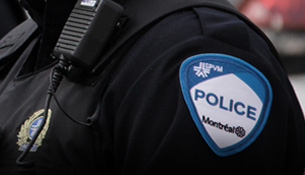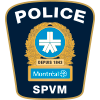Community relations officer
The SPVM has 88 community relations officers in the area's 31 local police stations. Each station may have one, two or three of these officers, depending on the needs of their area and community. The department's community relations officers are resource people in the field for prevention, community relations and youth interventions.
The duties of the community relations officer involve building close and lasting relationships with community organizations, institutions, businesses, schools, local media and residents in the area. These officers can therefore identify issues and concerns that affect the quality of life and sense of safety of the residents in their neighbourhood. Their focus is on social groups or the most vulnerable individuals in terms of being victimized and feeling safe. On the regular basis, the community relations officer gets out to meet the many partners. The officer meets residents and business people and regularly visits schools in the particular division's area, homes for the elderly and community centres as a few examples.
Given their vast knowledge of their area, community relations officers are valuable resources in resolving problems and putting lasting solutions in place. Community relations officers apply corporate prevention and intervention programs. They also develop local prevention programs that are adapted to the reality of their own local station. They therefore contribute their expertise and knowledge to maintaining safety in their division. They also provide support to officers at their local station in their areas of expertise, due to their indepth knowledge of the features of their division and their relationships with local partners.
They take on an especially important role with young people in the division's area. As youth intervention experts at their stations, they regularly visit schools and identify young people at risk of being involved in or affected by a criminal activity problem (bullying, extortion, etc.). They give presentations to students to provide them with safety and prevention advice. When necessary, they put targeted action or intervention plans in place to take action against certain issues.



